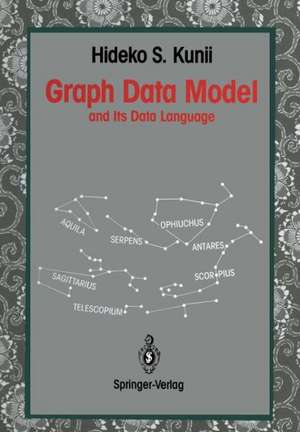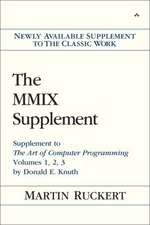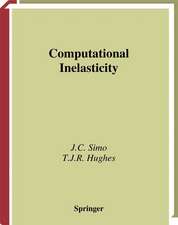Graph Data Model: and Its Data Language
Autor Hideko S. Kunii Cuvânt înainte de Gio Wiederholden Limba Engleză Paperback – 8 dec 2011
Preț: 324.82 lei
Preț vechi: 406.02 lei
-20% Nou
Puncte Express: 487
Preț estimativ în valută:
62.17€ • 67.11$ • 52.13£
62.17€ • 67.11$ • 52.13£
Carte tipărită la comandă
Livrare economică 19 aprilie-03 mai
Preluare comenzi: 021 569.72.76
Specificații
ISBN-13: 9784431681168
ISBN-10: 4431681167
Pagini: 124
Ilustrații: XVI, 106 p.
Dimensiuni: 170 x 244 x 7 mm
Greutate: 0.21 kg
Ediția:Softcover reprint of the original 1st ed. 1990
Editura: Springer
Colecția Springer
Locul publicării:Tokyo, Japan
ISBN-10: 4431681167
Pagini: 124
Ilustrații: XVI, 106 p.
Dimensiuni: 170 x 244 x 7 mm
Greutate: 0.21 kg
Ediția:Softcover reprint of the original 1st ed. 1990
Editura: Springer
Colecția Springer
Locul publicării:Tokyo, Japan
Public țintă
ResearchCuprins
1. Introduction.- 1.1 Motivation.- 1.2 Overview.- 1.3 Related Work.- 2. Graph Data Model.- 2.1 Overview.- 2.2 Schema.- 2.3 Elementary Data Operations.- 3. Data Definition Language.- 3.1 Overview.- 3.2 Schema Definition.- 3.3 Views.- 3.4 Schema Evolution.- 4. Data Manipulation Language.- 4.1 Overview.- 4.2 Volatile Object Definition.- 4.3 Record Selection and Creation.- 4.4 Link Selection and Creation.- 4.5 Storage Operations.- 5. Implementation of GDL.- 5.1 Overview.- 5.2 Some Design Issues.- 5.3 DDL Processor.- 5.4 Run-time System.- 5.5 DML Precompiler.- 5.6 Access Paths and Other Environment-Dependent Factors.- 5.7 Query Processor.- 6. A Comparison of Access Path Strategies.- 6.1 Introduction.- 6.2 An Extension of Yao’s Cost Model for Query Evaluation Algorithms.- 6.3 Costs of Query Evaluation Algorithms.- 6.4 Conclusion.- 7. Conclusions.- 7.1 Contribution.- 7.2 Future Research.- Appendix A: BNF Grammar of GDL.- Appendix B: Specification of Run-time System.- B.1 File Structures.- B.2 Parameters and Variables.- B.3 IRST Procedure.- B.4 XRST Procedure.- B.5 EXT Procedure.- B.6 NEGEXT Procedure.- B.7 NUM Procedure.- B.8 TRN Procedure.- B.9 LNKCRT Procedure.- B.10 PROJ Procedure.- B.11 FETCH Procedure.- B.12 UNI, INTS, DIF Procedures.- B.13 RADD Procedure.- B.14 RDEL Procedure.- B.15 LADD Procedure.- B.16 LDEL Procedure.- B.17 PUSH Procedure.- B.18 POP Procedure.- B.19 RLPROJ Procedure.- B.20 GETREC Procedure.- B.21 GETIDX Procedure.- B.22 GETLNK Procedure.- B.23 GROUP Procedure.- B.24 SORT Procedure.- B.25 ASGNRL Procedure.- B.26 DELRL Procedure.- B.27 ASGNREC Procedure.- B.28 ADDREC Procedure.- B.29 DELREC Procedure.- B.30 ADDIDX Procedure.- B.31 DELIDX Procedure.- B.32 ADDLNK Procedure.- B.33 DELLNK Procedure.- B.34 SRCHTRE Function.- B.35 ADDTRE Procedure.- B.36DELTRE Procedure.- Symbols and Abbreviations.









